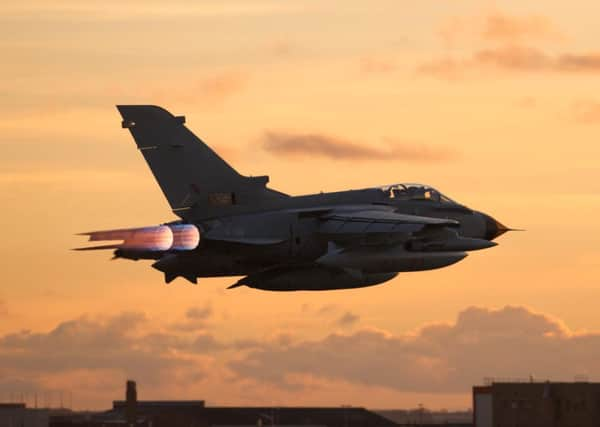Spare parts for fighter jets made by 3D printers


BAE Systems said the metal components were successfully used on board Tornado aircraft which flew from the defence firm’s airfield at Warton, Lancashire late last month.
And the company is now predicting that in the future the armed forces could “print” their own spare parts at the front line from a machine using powdered stainless steel.
Advertisement
Hide AdAdvertisement
Hide AdBAE Systems has been developing technology at RAF Marham, Norfolk, to engineer ready-made parts for four squadrons of Tornado GR4 aircraft, including protective covers for cockpit radios and guards for power take-off shafts.
Some of the parts cost less than £100. The stainless steel part used in last month’s Tornado flights was a bracket used to secure a camera to the under-carriage of the aircraft.
The company said the use of printed parts could cut the Royal Air Force’s maintenance and service bill by over £1.2 million over the next four years.
Mike Murray, head of airframe integration at BAE Systems, said: “You are suddenly not fixed in terms of where you have to manufacture these things.
“You can manufacture the products at whatever base you want, providing you can get a machine there, which means you can also start to support other platforms such as ships and aircraft carriers.
“And if it’s feasible to get machines out on the front line, it also gives improved capability where we wouldn’t traditionally have manufacturing support.”
Although the technology for 3D printing was devised in the 1970s it has only recently been adopted on a wider commercial basis. Under traditional methods of manufacture, a piece of stainless steel is cut and shaped into the correct size or different parts are bolted together after any excess material is shaved off. However, in 3D printing, instead of starting with a block of metal and fashioning it into the desired object, stainless steel in a powdered form is added to a printer and then grown layer by layer into the desired object, which has been designed on a computer. The process can take from several hours to several days depending on the size and complexity of the object.
This is the first time a metal part manufactured using 3D printing technology has been used in flight. In 2012 the first plastic parts manufactured by the technology were used on board a Vickers VC10 Tanker aircraft. The plastic parts were a housing for controls located in the cockpit of the aircraft which was retired in September.
Advertisement
Hide AdAdvertisement
Hide AdYesterday Andrea Kay, a media relations manager with BAE Systems, said the technology could offer benefits on the battlefield for the military: “The idea is that in the future the armed forces will be able to go into battle with 3D printers and powdered stainless steel and manufacture parts when required instead of having to have them constructed back in Britain and then shipped out to them. The possibilities of 3D printing technology [are] quite incredible.”
SEE ALSO